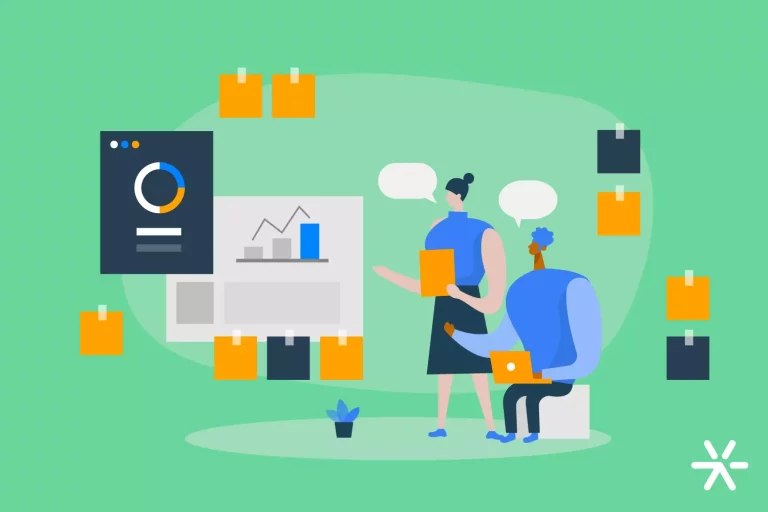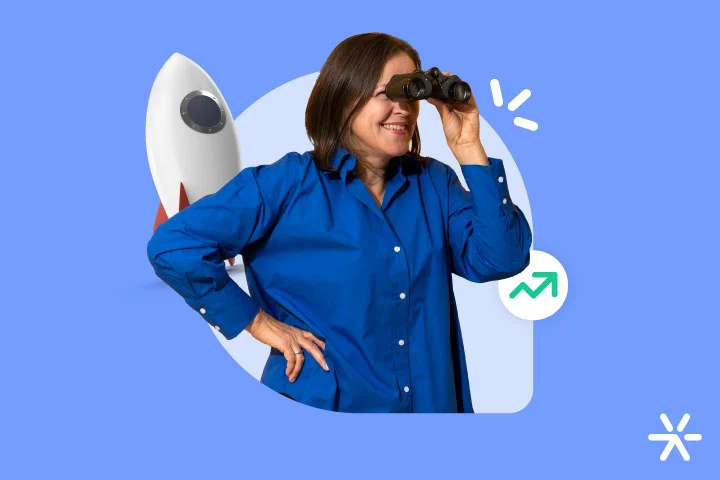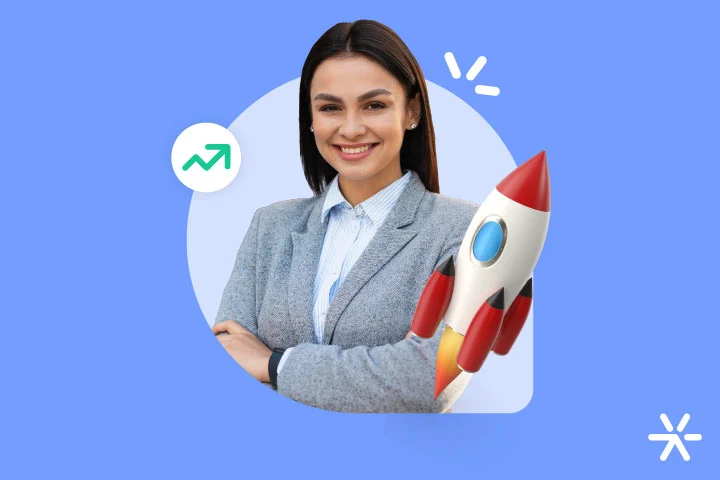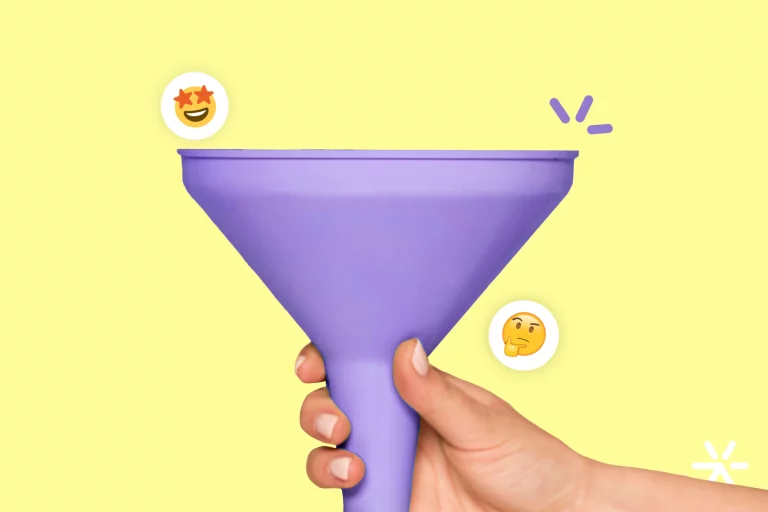Lead First Contact: 13 Tips on What to Say, Where and When
Lead First Contact is a major factor in your sales. Think of your brand as a store, and the internet as a large avenue, full of other stores. Did you get the picture?
Try to imagine the reasons why consumers look at your storefronts. Try to understand why they became interested in your store and your services. Maybe price, product quality, or even the quality of your website, right?
It’s the same in real life. Storefronts are attractive, the facade is well decorated, the store seems reliable and inviting.
Continuing with the analogy: it’s obvious that attendants and salespeople who don’t pay attention to those who enter the store will have more difficulty selling.
On the internet, it’s the same thing: the Lead First Contact needs to be tested, analyzed, and constantly improved.
Digital marketing thrives on first impressions because the internet avenue is vast, and competition is everywhere. Shall we talk more about the importance of the Lead First Contact and what to do at this stage?
Lead First Contact: The Key Points to Consider
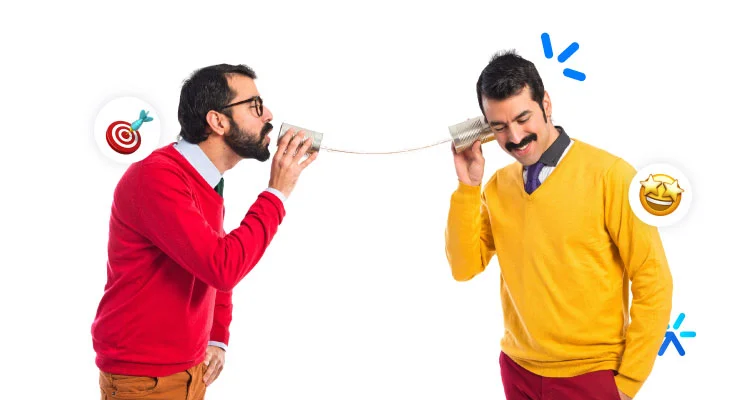
The retail world and the service sector have a well-defined idea of what constitutes good customer service.
A smile, uniform, friendliness, good training — all of these work to maximize the chances of selling to those who enter the store. And not just selling: selling a lot.
The Lead First Contact also has some key points to consider that you cannot ignore. These points translate the main values of good customer service into the reality of the internet and digital marketing.
Now, let’s talk about the timing and approach, as well as some more technical issues that make all the difference in the Lead First Contact.
Take a look:
Lead Response Time
The faster you can approach a lead, the better for your inbound marketing strategy.
By the way, a moment to talk more about this: everything you’re going to read in this article about the Lead First Contact will take into account inbound as the main methodology, okay?
Forbes even mentions that the average contact time with a lead in B2B companies is 47 hours. Too much time!
And it doesn’t matter what you intend to do with the lead after this first contact. Whether you intend to approach them immediately to sell, or if you want to place them in a nurturing flow, etc.: the first contact with the lead needs to happen quickly.
But understand that everything depends on the situation. Transactional leads, who are showing direct interest in your brand or product, convert more into sales when SDRs contact them within minutes.
But imagine doing this for everyone who downloads an e-book from your website? By definition, these people are also leads. In these cases, the first contact beyond delivering the product doesn’t need to happen within minutes — you may even risk scaring off this new lead and having them unsubscribe.
The important thing is to understand the context. If the lead is transactional and is already in an advanced stage in the consumer journey, direct approaches and within minutes convert more.
If they are not, it’s better to set longer deadlines to insert them into your flows and into the marketing and sales funnel.
Throughout the article, we’ll talk much more about this intentionality and lead timing, okay?
Message Content
The content of the message for the first contact with the lead also varies greatly depending on the conversion intent and the stage in the buying journey.
In most first contacts, the amount of data you have about the lead is very small. Because of this, your sales and marketing team needs to analyze the situation holistically.
This means that your sales process and the consumer journey map need to be very aligned. In the absence of data, your team’s inferences are extremely valuable.
The variation in content depends a lot on these inferences. When the lead requests a quote, for example, you need to offer that quote as quickly as possible and with as much information as possible.
When they convert into a newsletter, the message needs to inform them of the next steps: the email frequency, what they will receive, etc.
When they convert into a lead magnet, the first message beyond delivering the material needs to offer more content seeking lead qualification.
Over time and with more leads coming in, you’ll have more data on these actions — in other words, you’ll better understand which materials work best for your leads.
Segmentation
Understanding the stage at which your lead arrives for you has a name: lead segmentation.
Everything we’ve been talking about so far regarding variations in timing and content for the first contact with the lead goes through the concept of segmentation.
You need mechanisms capable of separating leads according to their interests so that your work in digital marketing becomes more optimized.
A quick example: we have a feature in Leadster for integration with the WhatsApp button. Your lead requests contact and leaves some information in the chatbot, and they are sent to the sales team already with information about their intention.
This segmentation is the lifeblood of your first contact strategies with the lead. Throughout the article, I’ll talk a little more about the most common types, but first, we need to talk about one more issue:
Automation Systems
Just as segmentation helps you understand what type of first contact with the lead you’re having, marketing automation tools allow you to act in a structured and reliable manner.
In your segmentations, you determine as “content lead” everyone who requested the download of material, for example.
This content lead doesn’t need to be approached immediately after delivering the material. You determine that, two days later, they will receive an email inviting them to the newsletter.
From the moment this lead enters the newsletter, they will start receiving emails weekly, offering more content and more qualification opportunities.
Great so far. But without email sending automation systems and lead segmentation itself, you can’t do any of this.
Any strategy that deals with leads will always need good automations. Maybe today you think it’s unnecessary because you generate 10 leads a month. But what about when it’s 300? 500?
The Types of Lead First Contact
So far, we’ve only talked about how the lead’s intent at the moment of their conversion has a direct impact on your first contact.
But we haven’t discussed the specific points of this intent, both in digital marketing channels and in other types of conversion – specifically in outbound and event contacts.
Leads can arise in other ways, but these three are the main ones. In this topic, we’ll talk a bit more about these types of first contact with the lead, differentiating in each of them the intent of the conversion.
Shall we?
Inbound Leads
Inbound leads are generated through your content and SEO strategies. People have a problem to solve, they find your brand to solve it, and may eventually be interested in your product.
Remember: inbound means “coming in.” So, all leads that find your company without prior contact with it are inbound leads.
This is a very quick summary of the marketing and sales funnel. But the important thing is to understand that inbound leads can arrive at any stage of the funnel – top, middle, or bottom.
Let’s go over some examples. A lead that arrives at the bottom of the funnel is one that searches for something like “service X in city Y,” or “product X,” regardless of location.
As you’ve worked well on your site’s SEO, it appears well-positioned in search engines. The visitor reads your site, gets interested, and requests direct contact with a representative.
This lead needs to be contacted immediately because they may have also requested this contact from your competitors.
At the top and middle of the funnel, it’s quite common for leads to arrive through content. Therefore, they don’t have such urgency in the first contact. It can be made one or two days later.
The priority of the first contact with the inbound lead depends on their stage in the funnel. Calling too early or too late are factors that make selling difficult. Always try to tailor the contact to the expectations of the inbound lead.
Outbound Leads
Outbound leads are those related to your marketing campaigns – that is, those generated when your company advertises directly and is seeking contacts.
Here we can highlight Google Ads, Social Ads, TV commercials, billboards, and anything else that is part of interruption marketing, which brings your brand to consumers.
The intent here is easier to understand since it depends on the ad itself. If the campaign is focused on sales — like a product test, for example — it’s a great idea to make the first contact with the lead as soon as possible.
But if the campaign is for other purposes, speed doesn’t need to be your main concern. An exclusive content lead generation campaign, such as an e-book ad, falls under the same rule as inbound leads.
Event Leads
The first contact with event leads theoretically already happened at the moment of conversion. But let’s not consider that because then we would have to consider a landing page as the first contact with an inbound lead, right?
Event leads are those you made at your brand’s stand at the event, during SDRs networking with participants, on guest lists (according to LGPD), etc.
The intent here also speaks very loudly. Event leads need to be very well segmented, going beyond “generated at event X.”
The qualification of these leads should be done on-site, and in the conversation itself. And your segmentation should respect this qualification. Thus, after the event, you can contact them with a more personalized approach.

Lead First Contact: 13 Tips on What to Say in the First Contact with the Lead
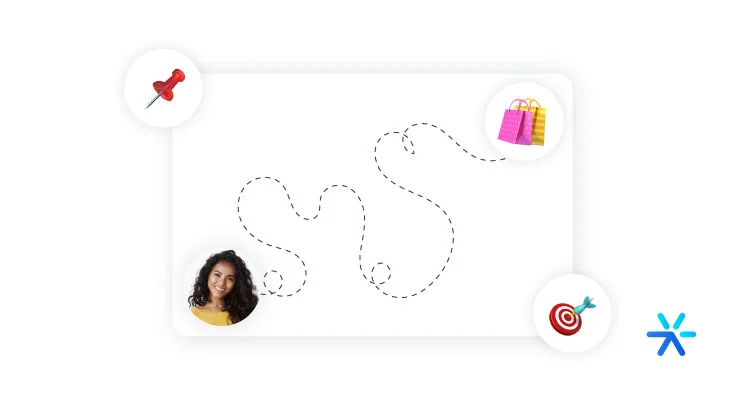
We’ve come a long way to get here. We’ve talked about various points of the first contact with the lead, so it’s worth a quick recap:
We understand that the time of the first contact with the lead varies according to the lead’s nature;
We’ve determined that the message content will also vary according to the visitor’s intent at the moment they become a lead;
We understand that segmentation and automation are crucial in this strategy;
We’ve discussed the three main types of leads: inbound, outbound, and event-generated.
But we haven’t worked on any practical approach yet. This topic will take care of that: see what to say to your lead according to their intent and the approach channel now!
First Contact Emails
Email is still going strong, probably one of the few relics from the internet of the 90s that remains relevant and unchanged to this day.
Sending messages through this channel is expected. But at the same time, each situation and lead’s intent presents different messages.
Here’s a list below with five situations where you’ll need to send an email as the first contact with the lead, and what to write in them:
- Emails to leads who requested contact: talk about your product or service in a personalized way. Ideally, the SDR should write the email for real, without copying from a template, relating the lead’s needs to what you offer. Send it quickly;
- Emails to leads who converted in outbound campaigns: this email can be more generic, coming from a standardized template already produced at the beginning of the campaign;
- Emails to inbound leads interested in content: these will be quite numerous. It’s interesting to create automation flows for each material in advance. For example: if the lead converted on something like the Leads Calculator, we have several suggestions for other related materials. But if they converted on the 2023 Leads Generation Overview, the materials they receive are different;
- Emails to inbound leads who signed up for a newsletter: the first contact with the lead should be an email explaining how the newsletter works and offering for the first time a trial of your product or service, if possible;
- Emails to leads who called the company: put more effort into showing the lead how much the company cares about them. It should be personalized, listing all the points of contact by phone, and delivering the requested information without errors or omissions. Send it very quickly!
First Contact with the Lead via Telemarketing
Many people define telemarketing as an outbound marketing strategy. It may seem so, but it isn’t.
The practice of cold calling is considered outbound, which confuses many people with the concepts. Cold calling is calling a list of leads who have never had contact with your brand. Telemarketing is not defined by this.
It’s possible to do telemarketing with inbound leads, for example. HubSpot itself, which coined the term inbound marketing, has worked and still works with telemarketing.
Anything involving contact with leads by phone is telemarketing. See how to approach them in five different situations:
- Bottom-funnel content leads: SDRs can reach out offering a trial or a no-obligation quote, as well as trying to understand how the company can help.
- Leads who requested direct contact on the site: these can also be approached via telemarketing. It’s ideal to call with a prepared email. During the call, you confirm the information and ask if the lead needs anything else. Inform them that the quote request was sent via email.
- Leads who converted in campaigns: the same rule applies — create a standardized script according to what the campaign is talking about.
- Leads who requested contact in events or webinars: it’s always good to have a standard offer for leads at different stages. In this case, for middle/bottom of the funnel, it’s best to always take the lead to the product trial, if it can be tested. If there’s no testing possibility, offer something equally tempting: free products, one month free, discounts for the first month, etc.
- Leads who tested your product: top-funnel leads often test your product without you even offering. They go to the site and do it. In this case, the first contact with the lead via telemarketing is a follow-up, indicating more features, offering some deals, etc.
First Contact with the Lead via WhatsApp
Making first contact with WhatsApp is quite popular. Perhaps not as much as email or phone, but the tool is increasingly becoming a great ally of marketing.
Here are 5 more tips on what to write on WhatsApp when making the first contact with the lead:
- Leads interested in your product or service: someone who has already tested, for example, can also be approached via WhatsApp. In this case, the best messages are related to the experience. Do you have any questions? How can we help you?
- Mass contact in groups: people who left their phones in a webinar, for example, may have less direct approaches. They were interested in the content but left their phone. Instead of calling, you can create a WhatsApp group gathering everyone and offer more content and exclusive deals there.
- Quick quotes: in many cases, people call, interested in your product, and ask for a quick quote. Delivering via WhatsApp is a great idea. Check all the information and send it. This is one of the most common practices of WhatsApp marketing.
What to Offer to the Lead in the First Contact?
Throughout the article, I mentioned several terms related to what to offer to the lead in their first contact moment. However, we only touched on them briefly, without delving deeper into any of them.
In this part of the article, let’s talk about 5 great offers to present to the lead, each fitting into a different intent and moment of the funnel.
It’s important to discuss this because many people end up offering the wrong deal at the wrong time. As we understand, the first contact with the lead is not fixed, it’s not always done the same way. Everything depends on the intent.
Most mistakes occur due to standardizing an offer. “Whenever someone converts, send them this e-book.” But what if the person converted directly on the contact chatbot, wanting to know more about the product? Is an e-book really always the material to be sent?
The key word here is always intent. Let’s talk about the relationship between intent and the type of material for the first contact with the lead now:
Free Materials
Lead magnets are rich materials—like e-books, whitepapers, infographics, studies, etc.—aimed at converting visitors into leads.
But this type of material serves other functions as well. Lead qualification is one of them.
It’s common for inbound leads, especially those from content, to receive more free materials as an official first contact.
Through these materials, you discover more about the lead and also argue in favor of your service, product, and brand.
But at the same time, they should be avoided at the bottom of the funnel, with leads who are more inclined to buy and want to know your product. In these cases, it’s better to be more direct.
Participation in New Webinars
Companies that invest heavily in content marketing hold webinars constantly. They are a great way to bring more views to all other texts, videos, and pieces published.
Besides, they also provide direct feedback between the company and the consumer and are available as content on YouTube and Social Media.
In these cases, it can be challenging to find something similar to send in the first contact with the lead. If the webinar was top-funnel, it’s better to invite the lead to another similar webinar instead of sending a list of several posts on your company’s blog.
This is because you keep everything within the same information axis. Of course, blog posts continue the lead’s journey through your company’s content, but other webinars invite them to something familiar.
And it’s always better to have people attending your webinars for a full hour than reading your texts for a maximum of 5 minutes.
Free Consultation
Consultation is great for companies working in the B2B segment. Besides offering something of great value to leads right in the first contact, they advance the funnel and put the SDR in direct contact with the potential client company.
But this type of offer is a bit more complicated to make. A complete consultation takes months. The ideal is to work with a simple questionnaire format that can be applied in a single meeting, with one or two follow-ups very close.
This way, in addition to offering a reasonable service, you also get a larger presence in the company you are targeting.
➡️ This is a strategy that works very well for ABM — Account Based Marketing. Read the article at the link to learn more. 😉
Product Demo
In inbound marketing focused on digital products and SaaS, the demo is often the main trigger in transforming a lead into an MQL.
💡 MQL is Marketing Qualified Lead, the highest level of lead qualification before they are sent to the sales team.
The demo is a great opportunity for you to show your middle/bottom of the funnel lead directly the features of your product.
Leads at this stage already understand their problems and want to know the solutions. In most cases, they don’t want content, e-books, none of that—they want a product that works.
And that’s what the demo delivers. All B2B companies need to offer some kind of demonstration, even if it’s just sending your products directly to the customer.
Now a personal anecdote. I started my career working with copiers. Paper quality is one of the main factors to avoid machine jams, which generate losses.
It was very common for paper brand SDRs to send a whole box, with 10 reams, for a “test”. They knew that if the quality of their product was superior, the copier owner would see the difference immediately.
Schedule a Meeting
A meeting for the first contact with the lead is mainly done with those who are in the last stages of the sales funnel.
Remember when we mentioned leads who go straight to your site and do the test themselves? Well, the next step to contact them is to schedule a meeting.
It’s in this meeting that you’ll understand how your product aligns with this lead’s needs, what features they’ve seen, and present others they haven’t seen yet.
Chatbots help you with the first contact with the lead
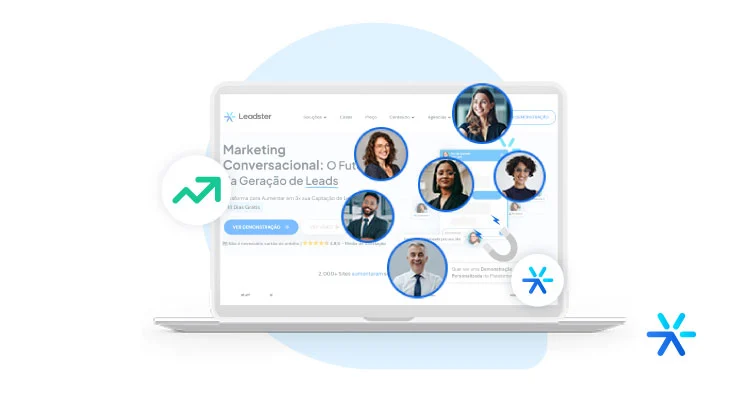
After lead generation, often the first contact with the lead can come in a very disorganized way.
Take WhatsApp, for example: it’s important that your leads come to the sales team with enough information so that the messages sent can be personalized. This ensures that the first contact stays focused on what matters: selling.
Having to ask for the name, company name, etc., makes the process difficult for your salespeople. Automatic qualification can be done with a chatbot.
But not just any chatbot. Prefer ones that offer customization options such as:
- Personalized messages depending on the page;
- Support for creating conversational landing pages;
- Support for A/B testing in your messages;
- Direct integration with WhatsApp, including a queuing function;
- Own lead storage and integration with automation platforms.
Among other qualities related to your needs.
These features I mentioned above are all from Leadster. How about you start a test and understand more about how we can help you in this crucial phase?
Thank you for reading, and we’ll see you in the next article 😉



